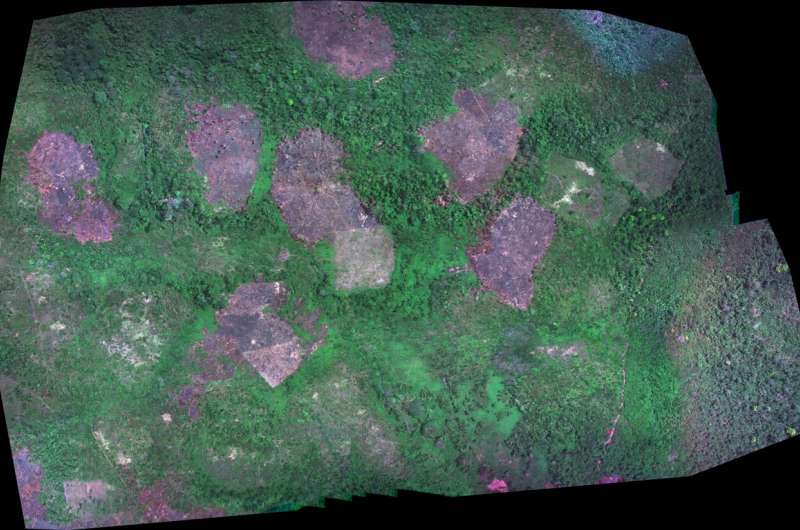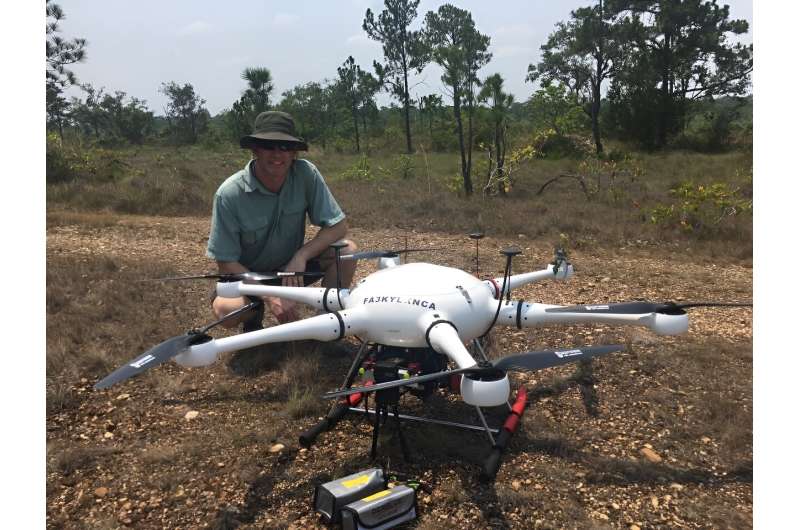This article has been reviewed according to Science X's editorial process and policies. Editors have highlighted the following attributes while ensuring the content's credibility:
fact-checked
peer-reviewed publication
trusted source
proofread
Slash-and-burn agriculture can increase forest biodiversity

The slash-and-burn agriculture practiced by many Indigenous societies across the world can actually have a positive impact on forests, according to a new study done in Belize.
Researchers found that in areas of the rainforest in which Indigenous farmers using slash-and-burn techniques created intermediate-sized farm patches—neither too small nor too large—there were increases in forest plant diversity.
This contradicts what had long been the standard view in the past, promoted by the United Nations and others, identifying slash-and-burn as a significant cause of deforestation around the world, said Sean Downey, lead author of the study and associate professor of anthropology at The Ohio State University.
"Our study provides quantitative evidence that these traditional agricultural practices can have positive outcomes on forests," said Downey, who is also a core member of Ohio State's Sustainability Institute and a member of the Translational Data Analytics Institute.
"Indigenous communities deeply understand forest ecology on their own terms, and that knowledge leads to practices that can increase biodiversity and help enhance the ecosystem."
The study was published online recently in the journal Communications Earth & Environment.
Researchers from Ohio State teamed up with local researchers and community members to study two Q'eqchi' Maya villages in southern Belize.
The approximately 18,000-acre study area is in the Toledo District of Belize and encompasses the Maya villages of Crique Sarco and Graham Creek. Downey has been working in the villages since 2005.
More than three-quarters of residents of the two villages rely on slash-and-burn agriculture—called swidden by anthropologists—as one of the main sources of their livelihood. Corn is the most important crop.
Swidden agriculture occurs on lands owned by the community and used under their customary rules and norms. Local households will clear a section of the forest for farming based on their needs. They will burn the trees they cut down to return the nutrients to the soil. They will farm the land for a few years and then let it return to its natural state while they use a new parcel of forest to farm.
The researchers used a variety of techniques, including remote sensing from drones and mapping on the ground, to estimate the number of plant species in specific areas and link that to landscape disturbance in the primary swidden-use areas of both villages in the study.
During April 2018, the researchers used long-range drones flying at 1,500 feet and fitted with a 5-band multispectral sensor to scan the study area. The sensors picked up small variations in the light reflected from trees and other plants that make up the overstory of the forests—what scientists call spectral diversity.

Higher levels of spectral diversity correspond with a greater diversity in the tree and plant life, Downey said.
Because the drones flew so close to the top of the overstory, the sensors were able to capture high-resolution imagery that is not available by satellites, he said. That allowed researchers to get a very fine-grain analysis of biodiversity.
It also allowed the researchers to locate small disturbances in the forest, including those from swidden agriculture, and calculate a "fragmentation index" for regions of the forest.
In addition, the researchers worked with a local mapping team that collected land-use history data to determine how long it had been since a particular patch of forest had been used for swidden agriculture.
"When you have a mature forest, the large trees create a canopy that blocks sunlight from getting to the forest floor, preventing other plant species from growing," Downey said.
"What swidden agriculture does is open a patch of forest that lets the sunshine in and allows other plant species to take root and grow. And when that happens, you're increasing the diversity in the forest, which is a good thing."
Downey noted that this happens naturally through lightning strikes, hurricanes, and other storms that open up forest areas. Indigenous farmers are leveraging the same kind of processes, creating patches that are just the right size to maximize species diversity.
The intermediate-sized patches are key to making this work, he said. Mature forests naturally have very low numbers of rare species that operate as seed banks. If cleared patches are too small, these rare plants don't have the opportunity to grow. If the patches are too big, that can eliminate the seed bank for the area so that the rare species can't come back.
"You have to get the spatial scale of these clearings just right to actually increase the biodiversity," Downey said. "That's what we found the local farmers were normally doing with swidden agriculture."
The evidence provided by this study about the positive impact of swidden agriculture is especially important now as the international community focuses on Indigenous agriculture in terms of climate change, Downey said.
COP28, the United Nations climate summit that started Nov. 28 in the United Arab Emirates, will have an "Indigenous Peoples Dialogue" session during the meeting on Dec. 5. In the summary for the session, the UN notes that Indigenous peoples protect 80% of biodiversity on Earth.
Downey said this research suggests that top-down regulation of swidden agriculture by national and international groups is not optimal. Rather, climate change programs should be willing to support practices and institutions that may seem distantly related to conservation but which may be critical to Indigenous cultures and livelihoods.
"Our study demonstrates that Indigenous communities, supported by their customary practices and cultural norms, can maintain this intermediate level of disturbance in forests that supports or even enhances biodiversity," he said.
More information: Sean S. Downey et al, An intermediate level of disturbance with customary agricultural practices increases species diversity in Maya community forests in Belize, Communications Earth & Environment (2023). DOI: 10.1038/s43247-023-01089-6
Journal information: Communications Earth & Environment
Provided by The Ohio State University


















